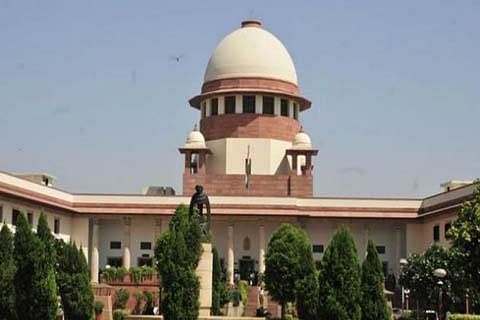In a relief to 20 trainee IAS and IPS officers who had challenged the Centre’s cadre allocation process for the 2018 batch, the Supreme Court Friday said they will be accommodated by increasing of one post in the state cadres of their preference this year.
The apex court ordered this while hearing the appeal filedby the Centre challenging the Delhi High Court’s verdict which had quashed theentire cadre allocation of IAS and IPS officers of the 2018 batch.
A vacation bench of Justices Indira Banerjee andSanjivKhanna praised Solicitor General Tushar Mehta for showing “exemplaryfairness” in suggesting that 18 petitioners who had approached the highcourt and two others who had moved the Central Administrative Tribunal (CAT) onthe issue would be accommodated without considering ’99’ in their respectivechoices.
As per the Centre’s cadre allocation policy for 2018 batch,the candidates had to enter “99” for no preference in zones andcadres in the online form.
“This will be done by increasing one post in therespective state cadres this year, which will have to be adjusted in comingyears. The suggestion is accepted by the respondents,” the bench noted inits order and said it is an “exemplary fairness” that Mehta hassuggested this.
The bench, which modified the high court’s order, directedthe Centre to accommodate the 20 trainee officers in the manner suggested bythe Solicitor General.
“It is made clear that such accommodation is being madeas an exceptional case and will not be treated as a precedent for othercandidates of the same batch or in future as only these 20 persons approachedthe court/ tribunal in time,” the bench said.
“Needless to mention that the original cadre allocationof the other candidates shall not be disturbed,” the court said whiledisposing of the petitions.
It said however that “all questions of law are keptopen”.
During the arguments, the bench said that it was a”very serious matter” and also observed that language of the officememorandum of September 5, 2017 relating to cadre allocation policy was”extremely vague”.
“Your circular should have been more clear and ifrequired, you should have given examples also,” the bench told Mehta.
However, Mehta said that out of around 400 candidates, only19 have raised grievances over the cadre allocation process.
He said that trainee IAS and IPS officers have undergonetraining as per local language and local revenue laws of the respective statewhere they will be posted.
On May 13, the top court had agreed to hear the Centre’splea challenging the high court’s May 3 verdict which had quashed the Centre’scadre allocation of IAS and IPS officers of the 2018 batch under the new policyand ordered fresh cadre allocation.
The high court had said that it was inclined to grant reliefto petitioners considering that they have approached the court at the veryearliest and at a stage when neither IAS nor IPS officers of the 2018 batchhave commenced their on-site training which are cadre-specific.
The high court’s verdict came on four petitions filed byvarious officers challenging the notification of the central governmentallocating cadres to candidates of Indian Police Service (IPS) on the basis ofresults of the Civil Services Examination (CSE), 2017.
They had sought direction to the Centre to issue a new listallocating respective cadres to selected IPS candidates in the CSE, 2017,purely on the basis of merit and preferences indicated in the online form, bycorrectly interpreting the Office Memorandum (OM) of September 5, 2017.
The pleas had claimed that the interpretation of CadreAllocation Policy 2017 adopted by authorities was unreasonable and grosslyunfair, unjust and arbitrary.
As per the 2017 office memorandum on cadre allocationpolicy, states and joint cadres were divided into five zones.
According to that policy, candidates were required to firstgive their choice in the descending order of preference from amongst variouszones. Thereafter, candidates will indicate one preference of cadre from eachpreferred zone.The candidates will indicate their second cadrepreference for every preferred zone thereafter. Similar process will continuetill a preference for all cadres is indicated by the candidate.






